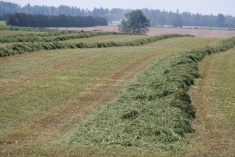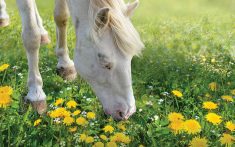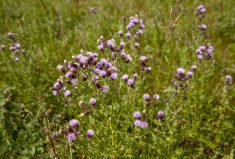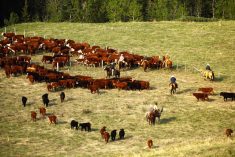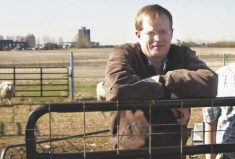Hay supplies and prices have been at a premium, but when purchasing hay it is important to keep quality in mind.
There is always a risk when buying hay from unknown sources, including poor nutritional quality; a different species mixture than you expected; excessive dust or mould; or a high proportion of weeds.
Here are some questions to ask when purchasing hay, especially from an unknown source:
- How long has the hay been stored, and was it stored under cover or outside? More storage losses will occur with hay stored
- Where was it cut? Ditch hay tends to contain more weeds and garbage.
- Did it get rained on? If so, how much? If the hay was not dried properly before baling it will likely be overly mouldy.
- Was the hayfield fertilized and/or sprayed for weeds? If so, this likely indicates good management, and herbicides sprayed on hayfields are safe for cattle as long as label restrictions regarding harvest times are followed.
- Are there weeds in the hay? How many and what type?
- How mature is the hay? This affects nutritional quality.
- What species are present in the hay? Legume or legume/grass mixtures will have different nutritional quality than pure grass hay.
- What is the average weight of the bales? This is important when buying hay by the bale.
Read Also

Good agronomy urged under uncertain canola market
With tariffs and trade wars looming, Canadian canola growers are urged to eke out every bit of efficiency in their 2025 canola production.
If you end up with hay you suspect may have inadequate nutrition, make sure to get it tested. (For more information on feed testing, go to beefresearch.ca.)
If hay is excessively weedy try to feed it in a confined segregated area, and avoid spreading the manure from cows fed that hay on other areas to limit the spread of weed seeds.



